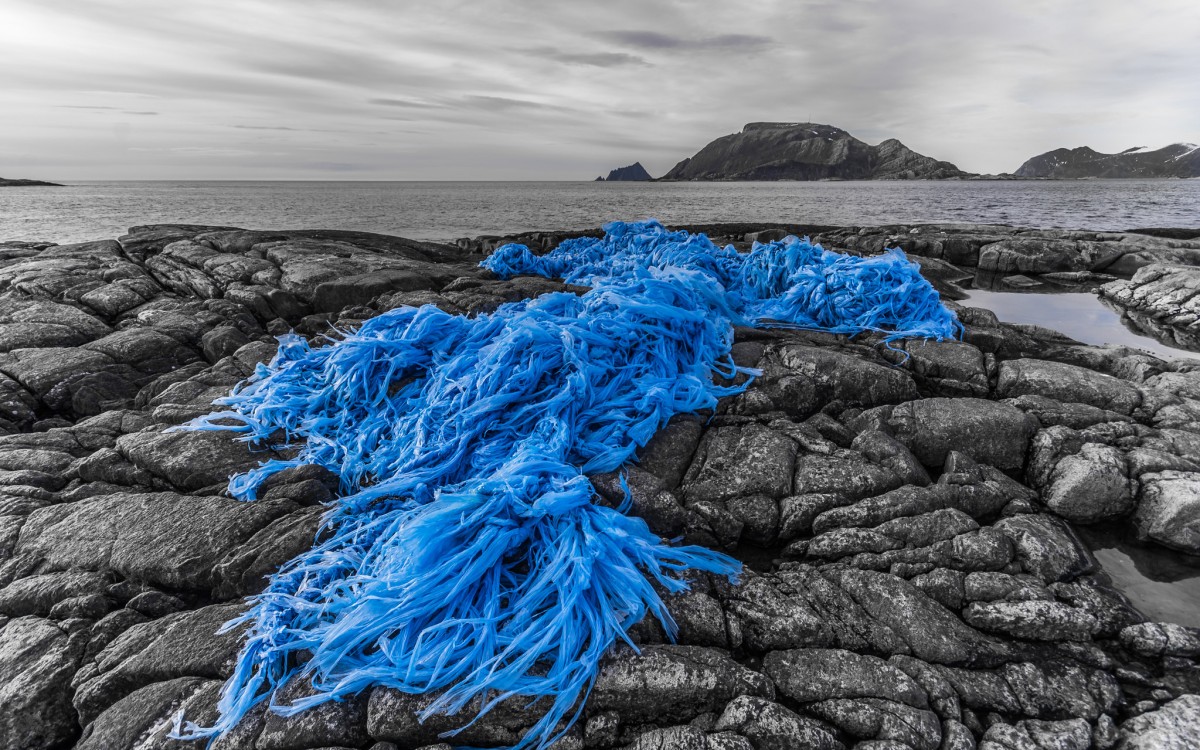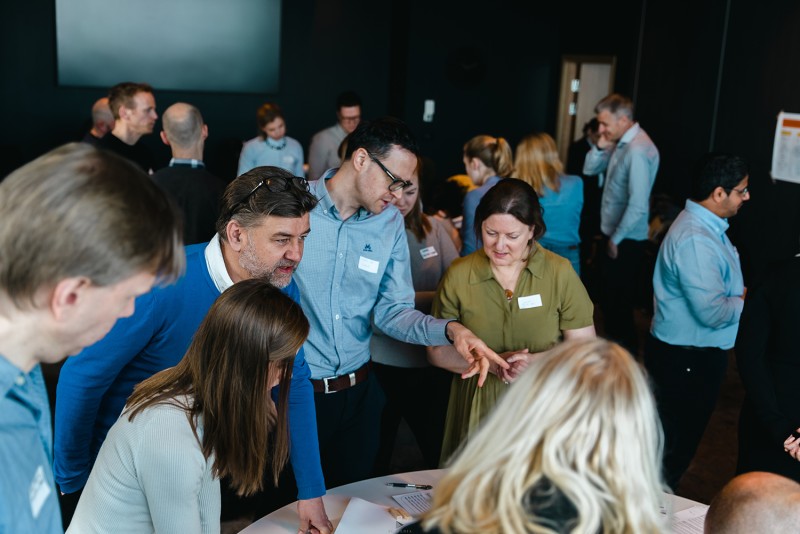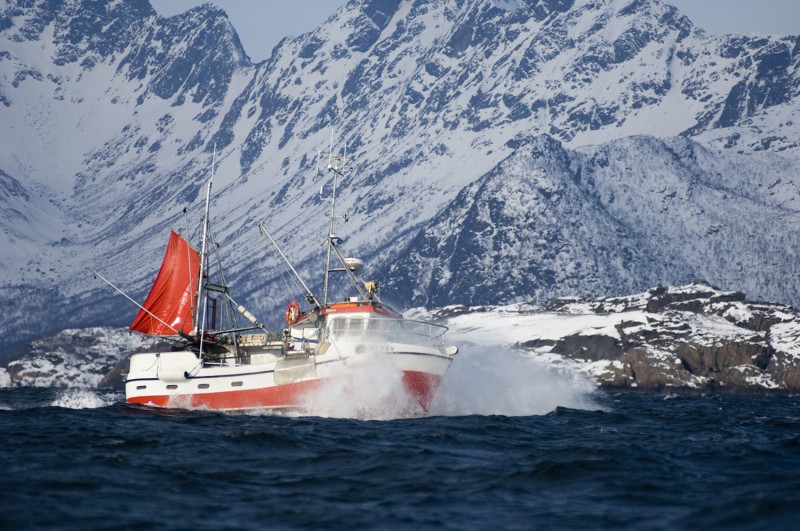How to combat marine plastic waste

The research project Shift-Plastics has identified the most important challenges that must be mitigated to reduce plastic waste from the fisheries and aquaculture sectors.
In the Norwegian context, the fisheries and aquaculture sector accounts for most of the plastic waste in the sea. This pollution has serious consequences for nature and the environment. The Shift-Plastics project focuses on plastic products from the fisheries and aquaculture sectors and examines how we can move to more sustainable and circular practices for the most problematic gear.
By identifying the challenges that arise throughout the life of the product and proposing sustainable solutions to meet them, the goals are:
- improved products will be designed
- plastic waste from the fishing and aquaculture industry will be reduced by improving handling
- products can be tracked down and collected more efficiently and have enough quality to be used further or reused in new products.
A report based on the project's first workshop has now been published. Here, challenges and possible solutions to what must be described as a wicked problem are highlighted.
– There is potential for improvement in all phases of the plastic product's life, from design to disposal, says senior researcher and main author of the report Megan Palmer-Abbs at Nordland Research Institute (NRI).
– The sectors themselves are positively disposed to overcoming the plastic waste problem, but there is a lack of an established, standardized, mandatory system available to everyone.

Cheap but environmentally dangerous
In the summer of 2022, Shift-Plastics brought together several actors from the diverse world of plastic products. Representatives from the entire value chain were represented: product developers, experts in production and waste, experts in recycling and disposal, and researchers.
The life cycle of plastic products was divided into four main categories: 1. Development, design, and production, 2. Use, 3. Collection, and 4. Recycling and disposal.
– The challenges already begin with development, design, and production, much of which takes place outside Norway's borders, says Palmer-Abbs.
– It is cheaper to import plastic products from Asia, for example, than to develop and produce the same products in Norway. But in many cases, we have no control over which type of plastic is used and its quality. Products with low plastic quality are destroyed more quickly and are easily broken down into microplastics, she says.
Demanding conditions
One of the proposed solutions from the researchers is to establish a new, interdisciplinary section of the value chain, including improved knowledge of the industry. This will cover the quality of plastic polymers, improved, more environmentally friendly product design and testing, and quality control for circularity.
– This new upfront product design stage should include expertise from the recycling and disposal sectors, of which Norway has some of the world's leading experts, as well as a set of Norwegian standardized practices for circular design, says Palmer-Abbs.
When the products come into use, the main problem is that fragments and whole parts of the fishing gear or aquaculture equipment are lost. The result is that most of the plastic waste along the Norwegian coast comes from these two industries.
– It is recognized good practices are in place for the fisheries and aquaculture sectors to take good care of the equipment. However, despite operating conditions being challenging for these sectors, improvements can be made that meet the needs of all actors, both large and small organizations, says Palmer Abbs.
At the workshop, it was discussed if and how the equipment could be marked to be found again if lost. Electronic monitoring, colored threads in ropes, and using buoys were among the suggestions.
– In Norway, there are already several systems for collecting fishing equipment and waste, but the challenges are many, says Palmer-Abbs.
– Smaller vessels struggle with the capacity and resources to prioritize waste management. In addition, the coast is very long, and there are too few places to dispose of the waste, she says.

Long coast, few facilities
Getting control of the problems with handling waste from the fisheries and aquaculture sector requires cooperation between several institutions and sufficient funding.
– The facilities for waste management along the coast are too few and lack an agreed standardized sorting approach and capacity, says Palmer-Abbs.
Once the waste has been fished up and brought to port, the goal is reuse or recycling.
– Some are being done regarding recycling, but far from enough. Here, the challenges already start in the design of the product. Will it be made so recyclable parts can easily separate from the rest? Is the plastic of sufficient quality to be used again? asks Palmer-Abbs.
Many product options
Successful recycling is still a challenge if the product has the properties needed to become a part of other products.
– We need recycling on a scale that mitigates impact and meets Norway’s objectives. Currently, there is a lack of will on the part of key players, there is a lack of an effective return system, and the attitudes to waste management in the fisheries and aquaculture sector lack coordination and consequences if not achieved, says Palmer-Abbs.
– Wider and more impactful information campaigns and initiatives are required along with an agreed set of standards to give the sectors guidance and assurance to make this move and improve the overall situation in plastic management, she says.
Building on good practices already seen in product design, reuse, and recycling is a quick win. For example, fishing nets can become goal-target nets or dog leashes. Many types of plastic are reused in safety equipment for tunnels, kayaks, garden furniture, and many other products.
In need of better collaboration
Today, too much collected plastic waste ends up in landfills or is incinerated. Many products have a complicated design, making distinguishing and separating multiple plastics and other parts like metal difficult.
– The current market setup does not incentivize all fishermen to deliver their waste to waste management, as access and additional expenses make this action a lower priority in busy daily lives, says Palmer-Abbs.
– The aquaculture sector has reacted to criticism of its poor track record in waste management and now sees improvements in collection and supply to recyclers. Still, more needs to be done to hit the scale of economies and the level of recycling to make a difference.
Keys to success
To level the playing field for all actors in these sectors, joint thinking and action are required beyond individual actors and organizations, e.g., public, private, and voluntary sectors,
– To achieve this, we need regulations and suitable mechanisms that encourage users to design, manage, collect, and deliver waste so recycling can be achieved much more and create a more extensive secondary market for our waste, says Palmer-Abbs.
– Regulation seems to be a way that has worked previously in Norway.
The researcher calls for a robust public sector in cooperation between the industry, research, and voluntary sectors.
– They need to understand that the core objective has to be solutions that meet both industry needs and improve circularity in products, says Palmer-Abbs.
– Too many objectives will detract from success. Focus and agreed shared objectives are keys to success.

